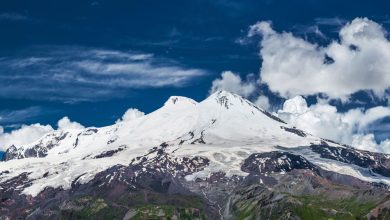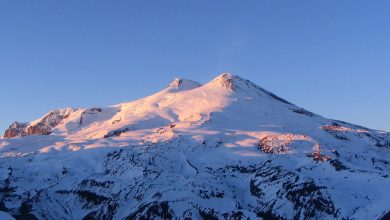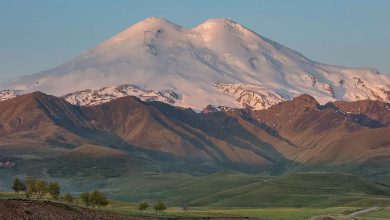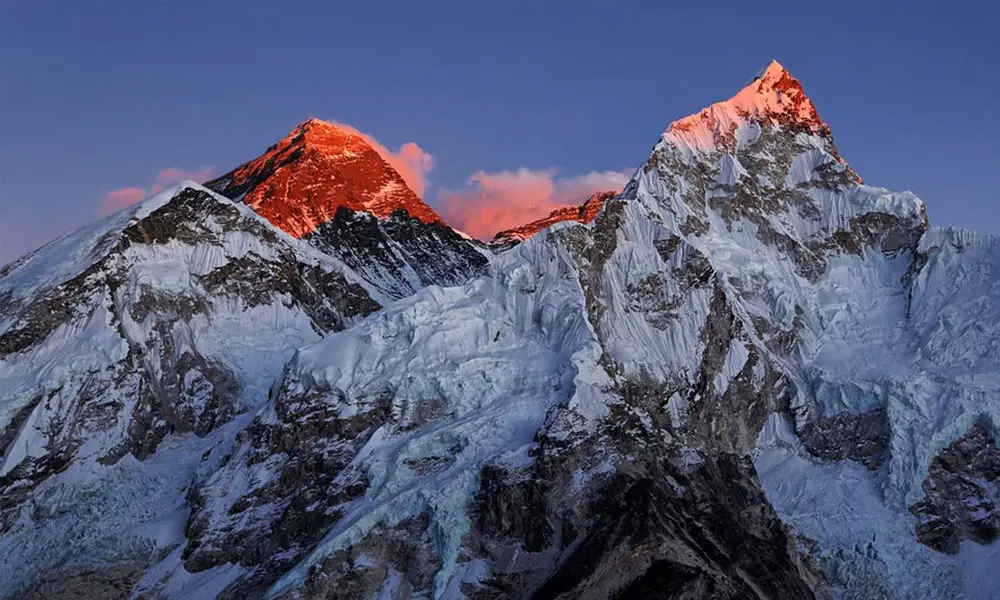
What is the scariest part of climbing Everest?
Climbing Everest is one of the proud adventures that every climber dreams of. The reason is simple; Mount Everest is the world’s tallest peak, attracting thousands of mountaineers every year. Sitting at 8,848 meters above sea level, it is also called Sagarmatha, where “SAGAR” means Sky and “Matha” means Head, considered ‘That which has its Head touching the sky.’ While most climbers might know about the thrills and adventures they get while climbing Everest, they might not be acknowledged with the scariest region and its challenges of it. So what is the scariest part of climbing Everest?
Here are some of the list of challenges that you will face while climbing Everest. And remember, these challenges are very risky and life-threatening, so having a proper plan and preparation for everything you have is a must. Get some notions on the common challenges and the tips to overcome them.
The Death Zone: Rainbow Valley | The Scariest Part of Climbing Everest

The Death Zone: Rainbow Valley is the scariest part of climbing Everest. The Rainbow Valley is very colorful and thrilling to look at but has the same level of danger. Rainbow Valley means the region has colorful surroundings, just like a rainbow.
The Death Zone is 5600 meters (18,372 Feet) above sea level. It sits on the north side of Mount Everest, and climbers can find the long range of rainbows stretching across the sky.
Rainbow Valley is not just called The Death Zone for nothing. There is a high possibility of altitude sickness in this region. As it sits 5600 meters above sea level, climbers may find their bodies hard to adjust to the altitude. Symptoms of altitude sickness include dizziness, headache, fatigue, and difficulty breathing, ranging from mild to severe. Similarly, HACE (High Altitude Cerebral Edema) and HAPE (High Altitude Pulmonary Edema) are also prone in this area.
The Death Zone Valley also features extreme cold temperatures, strong winds, and frostbite. And the land topography of this area is very secluded and isolated – if you accidentally fall into this, there might not be any help.
The Death Zone: Rainbow Valley also has a history of several mishaps. In 2017, a group of climbers lost their lives in this region while descending from the peak of Mount Everest.
It is essential to prepare for this region while climbing Everest. You should have the technical skills to climb successfully. Besides, you should prepare for extreme weather conditions – remember to pack warm clothes, sleeping bags, and gear like crampons, axes, climbing ropes, and other equipment.
What Are Other Scariest Challenges of Mount Everest?
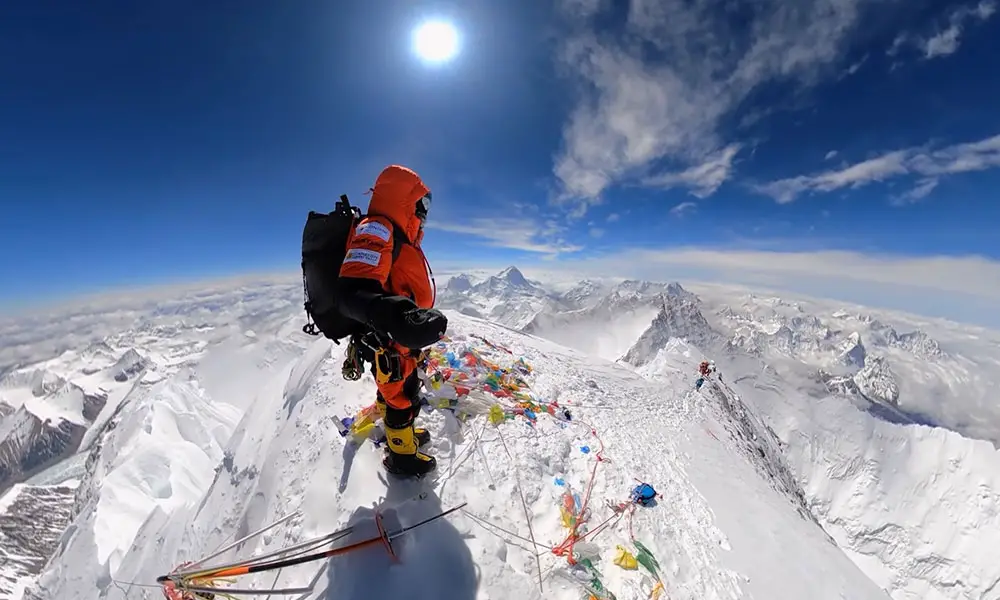
Altitude Sickness
Mount Everest is the tallest peak in the world, which stands 8,848 meters (29,029 Feet) above sea level. And this level of height is very risky for any physical being. Generally, the air is thin, and you will find the depleted oxygen level on Everest.
The oxygen level is always minimal at all parts of Everest, whether at base camp, camp 6, or the top of the mountain. And it’s the main reason to have altitude sickness on Everest. Since the low oxygen leads to difficulty breathing, you will start to have the symptoms of altitude sickness.
The main reason for altitude sickness in Everest is its height. Climbers not exposed to high altitudes can be severely indicted for this health hazard. They can get the symptoms like headache, vomiting, fatigue, nausea, and fever. Some very dangerous forms of altitude sickness are HACE (High Altitude Cerebral Edema) and HAPE (High Altitude Pulmonary Edema) – these forms of illness will directly hamper your brain, nerves, and respiratory system.
Generally, places above 3000 meters are considered prone to altitude sickness. And with a height of 8,848 meters above sea level, Mount Everest comes first among those places. Climbers must prepare physically and mentally with their gear and safety kits to eliminate altitude sickness. It is advised to take oxygen supplements to help you with breathing. Some climbers often use Diamox to keep themselves away from this health hazard. However, precautions should be taken before its intake.
Exposure to Extreme Weather Conditions
As we all know, Everest is not strange to its dynamic weather. The weather condition of the Himalayas in Nepal are unpredictable, and no one knows what happens next. Since its altitude is very high, Everest features heavy snowfall, which makes the surroundings cold every day, month, and year.
Mount Everest is known for its harsh weather conditions like storms, heavy snowfalls, and freezing temperatures, which can reach below -17 Degrees Celsius during the winter. And the thing to be noted is that weather can change rapidly and catch climbers off guard. Due to this, many climbers have to risk their life while climbing Everest. They are most likely to face the risk of frostbite, hypothermia, and other weather-related injuries.
First, you must listen to and note the weather forecast to protect yourself from extreme weather conditions. Then, you should plan accordingly for your expedition – if the weather is bad or going to be bad, it’s better to postpone and reschedule your climbing itinerary. Besides, you should pack safety kits and weather-friendly clothes. You must have warm thermal inner and outer layers, rainproof and windproof jackets, warm socks, gloves, hats/caps, sleeping bags, and other required materials. The main motive is staying warm so you will not freeze to death.
Avalanches and Rockfall
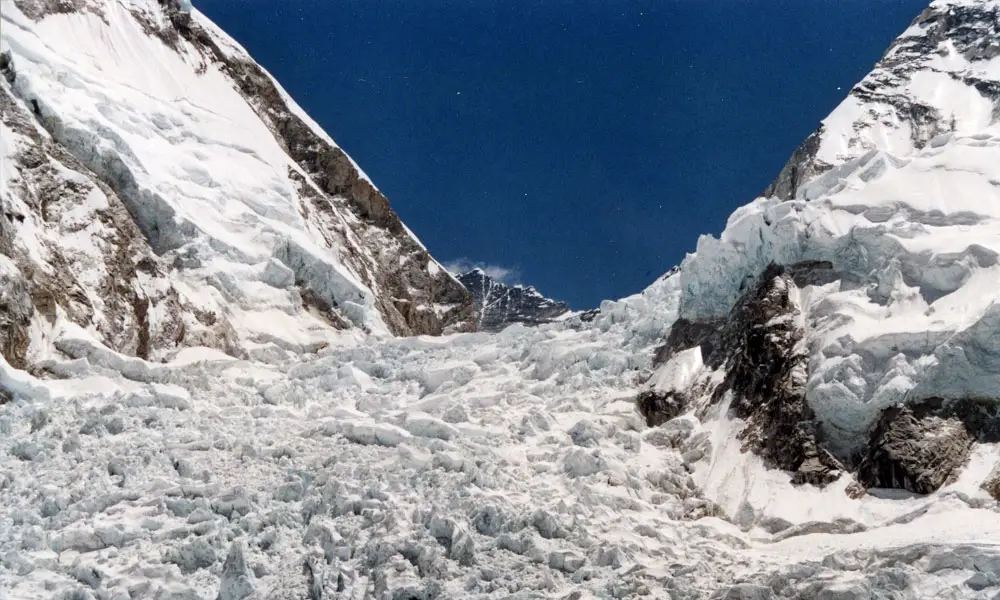
We have seen and heard many stories of avalanches on Everest. Especially during the winter, the Khumbu region features heavy snowfall, which even leads to bursts of avalanches. This is a very serious calamity that can cost several lives and properties.
The important thing to know before heading for the Everest Expedition is that the terrain on Everest constantly shifts and changes. So avalanches and rockfalls are common in this area. You can take the example of the 2015’s Earthquake in Nepal, which brought an enormous avalanche. It took the lives of 19 climbers at the base camp and injured dozens of others.
Also, avalanches sweep away your tent and belongings, making you starve and freeze to death. So what you need before embarking on the Everest expedition is a set of technical skills and the capacity to take the risk. Having a skill will help you get out of trouble during avalanches. It teaches you how to save yourself and rescue injured climbers due to avalanches and rockfalls.
It’s better to have your life and travel insurance before the start of your journey, so they can compensate you if anything unexpected happens.
Physical Exhaustion and Fatigue
Reaching the top of Everest is not child’s play. You will encounter several life-threatening issues and risks as you have been on the play horror night. The journey is physically demanding; if you are not physically fit, your journey goes wrong. That’s why you need months and years of training and preparation for climbing Everest.
To start climbing, first, you should reach the Everest Base Camp. And reaching base camp itself is a physically challenging. Since you have to walk for hours every day for around 12 to 15 days to reach Base Camp, you will already be exhausted. And the climb to the top of Everest adds up the risk even more.
The total expedition package will be around 25 to 30 days, where you will mostly be physically involved. Similarly, the landscapes of Everest are slippery and sloppy, which drains your energy and stamina. Even one wrong step can cost you your life during the climb, so it’s better to be physically prepared before starting the expedition. Always remember to acclimatize and eat healthy and nutritious food to retain energy. On top of that, enough rest and hydration come as a high priority.
Crowds and Logistical Challenges
Mount Everest is one of the most popular destinations for adventure worldwide. The highest peak in the world is undoubtedly thrilling and adventurous but risky. As one of the most popular destinations for climbing, Everest alone features a record of thousands of climbers in a year. And guess what? During the peak seasons like Spring (March-May) and Autumn (September- November), the ratio of mountaineers is even high.
On average, 800 climbers try their luck to conquer the tallest peak. On May 23, 2019, alone, 354 climbers reached the top of Mount Everest. It means that the number of climbers is increasing yearly, which brings the issue of overcrowding.
Overcrowding has many disadvantages, such as logistic problems, the risk of falling off the ridges, scarcity of space to set up the camps, and many others. This can also create dangerous situations, such as bottlenecks on narrow sections of the mountain and delays in reaching safety.
Crevasses
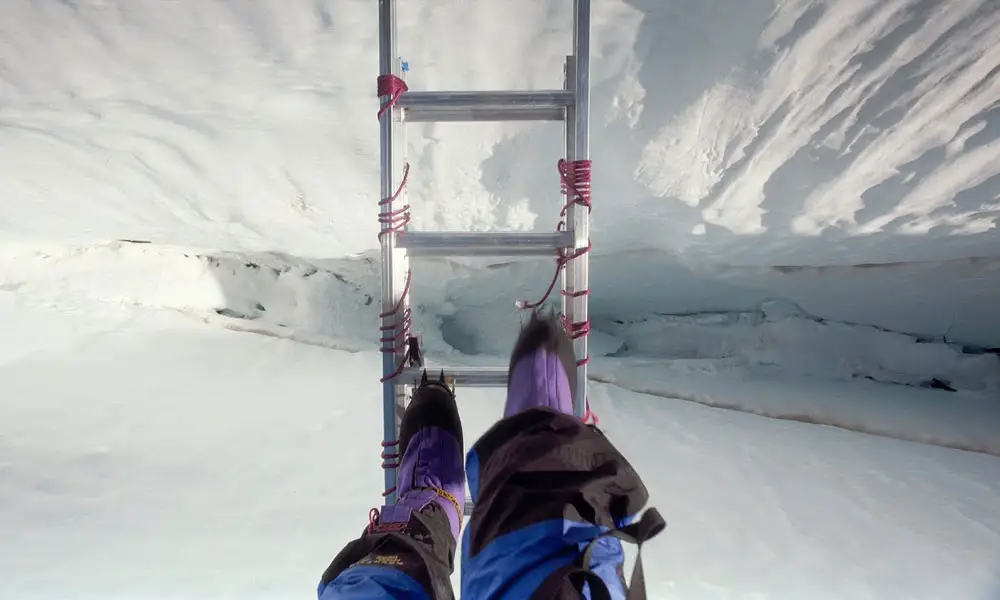
Crevasses are one of the scariest challenges while climbing Mount Everest. As we all know, Mount Everest features a wide range of treacherous crevasses, which are deep, narrow, and dark. Crevasses are generally large fractures in glaciers, which can be incredibly dangerous for mountaineers attempting to cross them.
The movement of the glacier creates crevasses on Mount Everest. It creates a large stretch and cracks as the glacier moves in uneven terrain. Crevasses can be difficult to see, especially when hidden beneath snow and ice, and pose a significant hazard to climbers.
Crossing these large crevasses on Everest should be taken seriously since they can be life-threatening. Many people have lost their lives while crossing these crevasses on the verge of their climb. Mountaineers should be well-prepared for climbing in these places. They must do a careful execution with a set piece of technical skills to avoid potential hazards. Climbers should know how to properly use the climbing ropes, axes, and crampons. They use crampons and ice axes to traverse the crevasse, maintaining balance and avoiding unstable snow or ice.
Apart from that, crevasses can be psychologically challenging for climbers. Feelings of fear and anxiety may erupt as they are deep, dark, and large.
The Dead Bodies Around The Trail
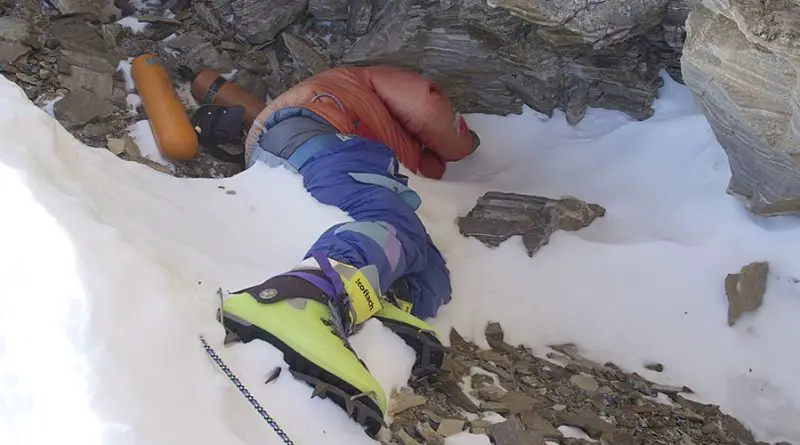
Mount Everest’s trail has several dead bodies that have been there for years. While many climbers consider them the trail marker, they are still a stark reminder of the risks and dangers of climbing Mount Everest.
The history of mountaineering in Everest started decades back, and more than 310 people have lost their lives on the verge of climbing the highest peak. Most of the body remains on Everest, while some have been recovered and handed to their family. Famous people like Francys Arsentiev, Tsewang Paljor, Scott Fischer, George Mallory, Hannelore Schmatz, David Sharp, and many others still sit en route to Everest.
The rescue of the dead bodies can be very difficult or even impossible to execute. Due to the extreme climate, freezing temperature, sharp storms, and rugged terrain, it can take rescuers to reach the dead body. Removing a body from Everest can be extremely dangerous as it requires specialized equipment, trained personnel, and skill sets.
The dead bodies around the Everest trail also pose psychological problems. Many climbers cannot get past the dead bodies as they indicate the extreme risk and dangers associated with mountaineering.
Mental Fear of Failure
The mental fear of failure is the most common challenge while climbing any mountain peak. And when it comes to Mount Everest, mental fear can be even more due to the harsh challenges posed by the mountain. The first thing is Everest is the highest peak in the world, and reaching to the top of it can be very hard and is not everyone’s cup of tea.
The climb is physically challenging, which can be mentally intriguing. Climbers may fear failure, which can manifest in several ways, including anxiety, self-doubt, and lack of confidence. The main thing to lead mental fear of failure is physical exhaustion. If your body gets physically exhausted, climbers might not feel that they can continue their climb ahead, which eventually hampers their mountaineering.
One of the best ways to overcome the fear is to focus on the climb’s positive outcome. Similarly, climbers must prepare well for the climb and be ready to take the possible risks and dangers posed while climbing the peak. They should also be flexible with the schedule; if you encounter bad weather conditions, do not hesitate to postpone your expedition. Or if your body weakens and shows the symptoms of altitude sickness, descend to the lower altitude. This can help to build confidence and reduce anxiety.
Besides, climbers should have a realistic understanding of the risks of climbing Everest. The dangers of high altitude, extreme cold, storms, avalanches, rockfalls, and frostbite should be in the mind of mountaineers. This can help to manage fear and anxiety during the process.
On top of that, climbers can take advantage of several training and visualization techniques. These workshops give you the rehearsal of the steps to reach the summit of Everest. In addition, it can also build confidence and reduce anxiety.
You may also like:
- Fastest Person To Climb Everest
- All 14 Mountain Peaks Above 8000 Meters
- Why does it take so long to climb Mount Everest?
- Is There An Age Limit To Climb Everest?
How to Prepare For The Challenges of Mount Everest?
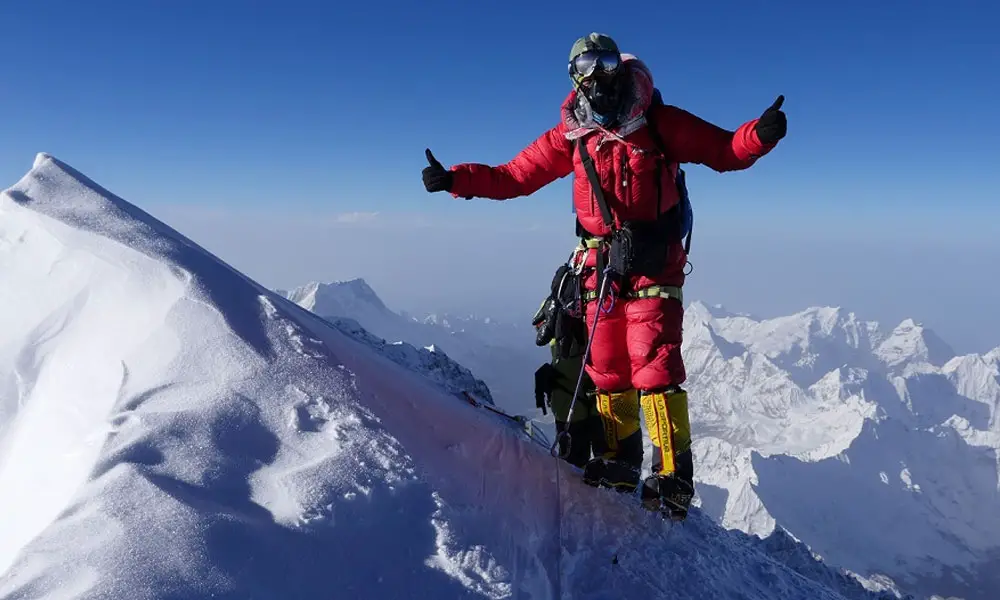
Build Physical Fitness
To successfully embark on the Everest Expedition, you must be physically fit. As this expedition needs a high level of physical activities like trekking, climbing the ridge, and others, your physical fitness, including stamina and energy, matters the most. Climbers should be mindful of the possible physical dangers on Everest. So we recommend they engage in aerobic and lung training, strength training, and exercises.
Acquire Technical Skills
Without intense technical skills, you cannot embark on the Everest Expedition. Even highly experienced climbers have failed to reach the peak’s summit, so climbers need to be professional in mountaineering with proper skills in rope handling, climbing, and glacier travel. You can acquire these skills at several mountaineering institutes that deal with technical climbing training sessions. On top of that, you must train and practice with experienced guides and instructors.
Plan Logistics
Managing and handling logistics can be difficult while climbing Everest. First things first, it is challenging to climb Everest, and the role of managing the logistics added to your account can make it more devastating. So before taking on the Everest Expedition, mountaineers should carefully plan the logistics of the climb. It may include transportation, gear, supplies, and permits. Remember that it might be hard to handle if you are not a professional, so properly understanding the route, weather conditions, and rapport with the professional guides and porters is essential.
Prepare Mentally
As said earlier, mental challenges can cost you your expedition. We only recommend that climbers prepare for the worst and work on properly managing their essential steps while climbing. This may include physical and mental preparation, gear and equipment, proper planning of the climb, and understanding of altitude sickness and health.
Build a Support System
Climbing Everest is challenging, and without support, you may feel lonely and helpless during emergencies. The first-hand support system during the climb is your guides and porters, who are dedicated to offering you an enhanced and safe climb. Listen to their instructions and use your technical skills wisely. Similarly, you can align with other climbers and work collaboratively to push yourself to the summit of Mount Everest.
Stay Up-to-Date
This is the most important thing to remain safe during the Mount Everest Expedition. Climbers should always be updated with the ongoing matters around the Everest region. They should know the landscapes, weather forecasts, safety issues, and changes in the itinerary of their climb so that they can make the most out of it safely.

